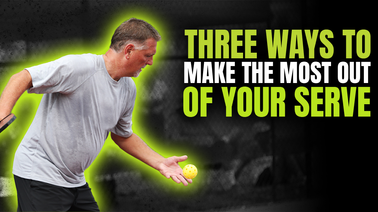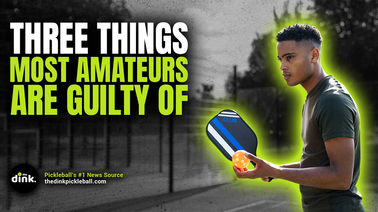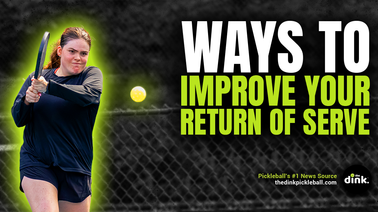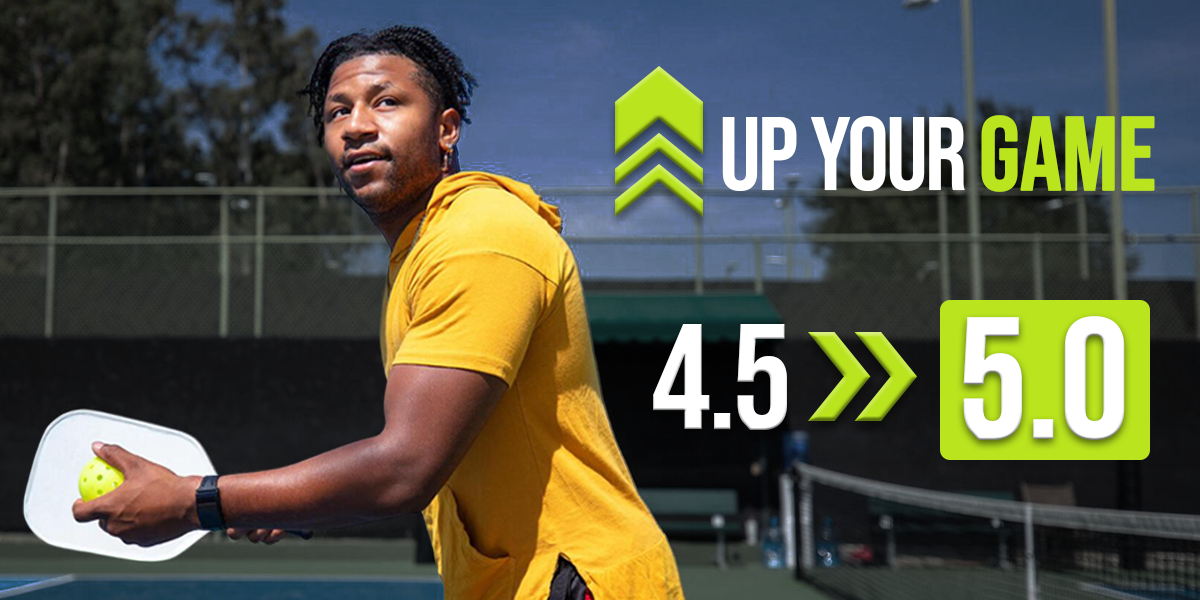
Climbing the pickleball ranks can be challenging, and you might find yourself asking "where do I go from here?"
Once you have reached the 4.5 level, you should have mastered the basics, developed different and adaptable strategies, and have tournament or game experience under your belt.
At the 4.5 level, you are exiting the intermediate stage and working towards pro, but in order to do so, you’ll need to fine tune your game. If you are looking for more specific things to work on, here are my keys to advance from a 4.5 to a 5.0 player.
Am I a 4.5 pickleball player?
First, it may be helpful to identify your current rating (check out DUPR and start registering your scores). To see a detailed breakdown of each skill rating, check out the USA Pickleball player skill rating definitions. A 4.5 player can consistently drive off both the forehand and backhand wings with consistency and spin from the baseline. Their serves and returns land deep with the ability to apply various spins.
At the kitchen, they are able to dink with increased consistency and in different patterns, and are able to identify and attack high dinks. They hit unattackable third and fourth shots with consistent placement and depth. From a strategy standpoint, they are able to move efficiently throughout the court, are very comfortable at the kitchen, and can easily adjust their strategy and game style to work with their partner while also exploiting their opponents’ weaknesses.
Things to Focus On
- You are ready to go from "good" to "great."
In my previous piece going from 4.0 to 4.5, I reminded pickleballers how important it is to let your opponents make mistakes by applying pressure. That will remain true for the rest of your pickleball career.
However, in order to get to the 5.0 and especially pro levels, being "good" won’t always be good enough. It’s time to take the three shots or plays below and work towards executing them at an even higher level, putting the match on your paddle.
- The location of your speed ups is more important than the power or speed
First of all, welcome to a skill level where all four players are getting to the kitchen almost 90-95 percent of the time. Gone are the days and intermediate-rated players speeding up almost every single shot.
Now, where you hit your shots is arguably more important than how. When you work a dink rally and get an attackable ball, find your opponents’ right hip as a target, and hit the ball there. This will jam them and will likely result in another attackable ball, which you can then put away. The middle is also a good spot to attack, but variation is key.
- Be able to dink on a dime
As a 4.5, you are likely a very consistent, solid dinker. With that being said, to get to the next level, you need to be able to hit all kinds of dinks (topspin, slice and flat) to all areas of the kitchen. You should be able to find both opponents inside foot, dink cross on both sides, and be able to change the dink pattern at will. In essence, you want to go from a good dinker (someone playing in the orchestra) to the maestro (the orchestra director).
- Get your hand speed up, and use it smartly
It is 100 percent true that at the higher levels, the game gets much faster, and this is extremely evident in hands battles.
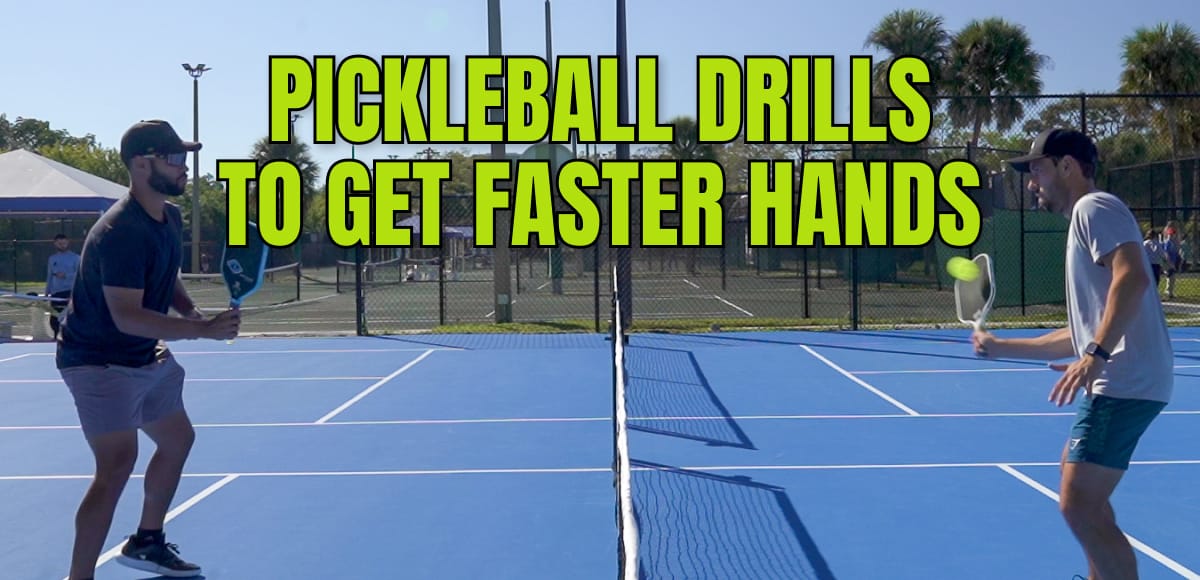
As you become a conductor in dink rallies, it means you will get more speed up opportunities, and therefore more hands battles. You will need to be ready to hit anywhere from 3-5 "winners," because your opponents’ hand speed will also be developed.
Remember to hit your spots to get ahead in a hands battle, and then be ready for a firefight, staying as low as possible and keeping your paddle in front without overextending.
One last thing to remember: don’t just speed up unless you are certain you’re going to win a hands battle. It is almost always better to work the point first.
Things to Avoid
- Playing it safe or refusing to take chances
Again, I just spent a good chunk of space in the last article exclaiming how important it is to let your opponents make mistakes first. I stand by that, but as you grow in level, your opponents do too, and they will make fewer errors. That means you will have to force them to make errors by playing smart, aggressive, opportunistic pickleball.
The last word in that series of adjectives is the most important. Once you receive an opportunity to attack and hit a spot, go for it. Don’t hesitate or doubt yourself, especially since you have less than a second to make that decision. At this level, you have to play offense when you get the chance.
- Forgetting to get better and train off the court
Once you have reached this level, and especially if you play mixed doubles or singles, you have long since debunked the myth that pickleball isn’t physical. The game is faster, the players get more balls back, and the points and games become more grueling.
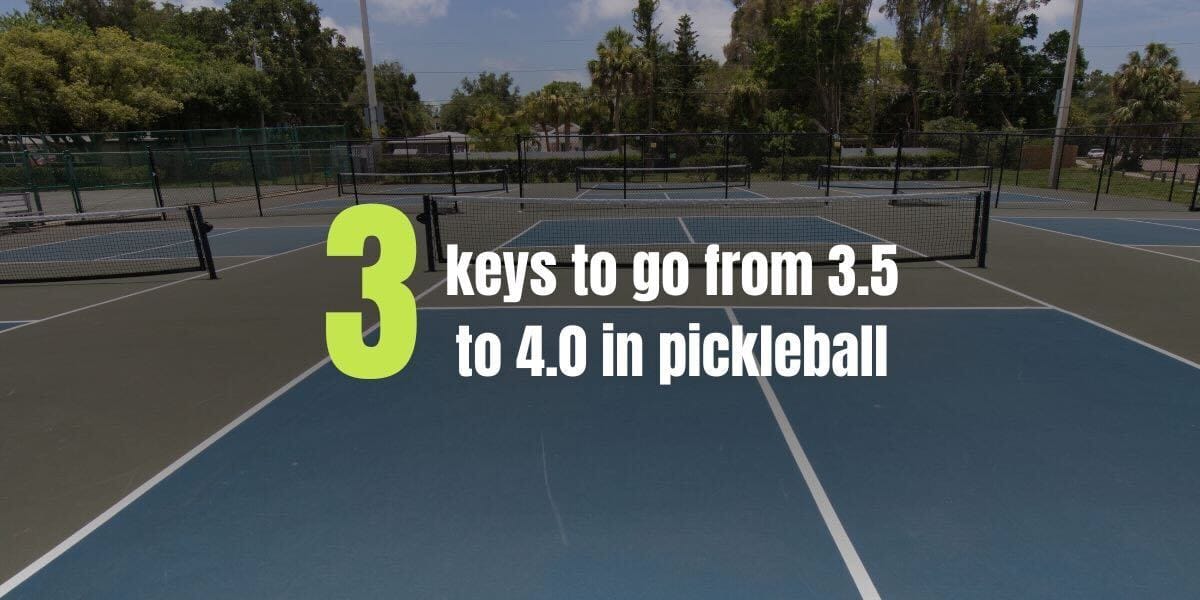
As you develop your game on the court, remember to do so off the court too. Start to increase the intensity in your workouts, find time to watch videos to boost your mental and strategy game, and make sure you are keeping your equipment up to date. At the end of the day nothing will replace playing and practicing on court, but at this level, it’s important to start investing some off the court too.
Recommended Drill: Hands Battles in the Kitchen
Consider this a one-time pass to actually hit the ball out of the air in the kitchen. Get with your partner (or the wall if you are riding solo) and stand 6-12 inches inside the kitchen line.
Proceed to trade volleys and start a 75 percent hands battle with your partner. Work on patterns (their forehand to your backhand, etc) from this distance away from each other. This will slowly build your hand speed. Keep score or keep time, and then step back to your normal place behind the Kitchen. The ball will seem like its moving more slowly, and your hands will feel faster!
Bonus Tip: Incorporate the "ready position" into everyday life
If you are like me, you work a full-time job and don’t get to spend nearly the amount of time you wish you could be playing pickleball or training for it. Therefore, we have to find workarounds and small things that can go a long way.
One of those for me is finding time or scenarios to build the muscles that we use when in the athletic ready position. I like to do wall sits, since there’s almost always a wall within striking distance. I try to start and finish every day with a wall sit (usually a couple of one-minute reps) before going about the rest of my day. Try to add these in to your daily routine.
Be on the lookout for the next article in our Advancing in Amateurs series. Enjoy the grind, and remember, you can’t dink all day if you don’t start in the morning.

Eric Roddy
Eric is a PPA tour pro living in Charlotte, NC, sponsored by PROXR. In addition to playing PPA events, he teaches pickleball 2-3 hours a week, enjoys golf, and listening to his favorite band Goose.





